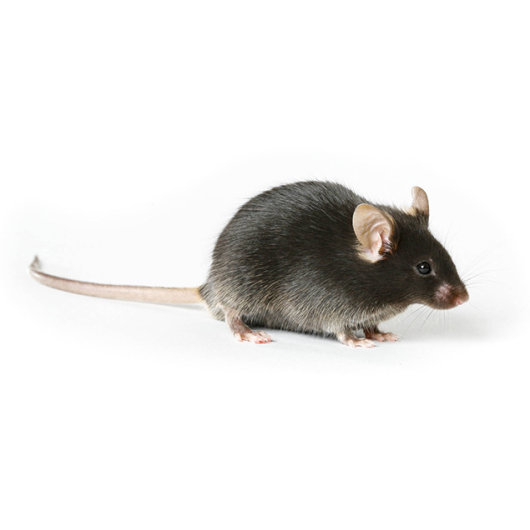
ApoE KO mouse, B6.129P2-Apoetm1Unc/J
Mice homozygous for the Apoetm1Unc knock-out mutation show a marked increase in total plasma cholesterol levels that are unaffected by age or gender. Fatty streaks in the proximal aorta are found at three months of age. The lesions increase with age and progress to lesions with less lipid but more elongated cells, typical of a more advanced stage of pre-atherosclerotic lesion. These ApoE KO mice are useful for studying cardiovascular disease, atherosclerosis and fat metabolism, as well as the role of ApoE in Alzheimer's disease.
Nomenclature: B6.129P2-Apoetm1Unc/J
Type: Inbred
Origin: The Apoetm1Unc mutant strain was developed in the laboratory of Dr. Nobuyo Maeda at The University of North Carolina at Chapel Hill. The 129P2/OlaHsd-derived E14Tg2a ES cell line was used. The plasmid used is designated as pNMC109 and the founder line is T-89 in the primary reference. This C57BL/6J-congenic Apoetm1Unc strain was produced by backcrossing at least 10 generations to C57BL/6J inbred mice. These mice have black coat color.
Of note, previous to 1995, mice backcrossed 6 times (N6) to C57BL/6J mice were distributed solely. Mice from the N6 generation were homozygous for pink-eyed dilution p giving them pink eyes and a silver coat color. The E14Tg2a ES cell line carried this recessive mutation which remained linked to the targeted Apoe gene on Chromosome 7 at the N6 backcross generation. Mice from the N6 colony are no longer available for distribution [1995].
Detailed description: Mice homozygous for the Apoetm1Unc mutation show a marked increase in total plasma cholesterol levels that are unaffected by age or sex. Fatty streaks in the proximal aorta are found at 3 months of age. The lesions increase with age and progress to lesions with less lipid but more elongated cells, typical of a more advanced stage of pre-atherosclerotic lesion. Moderately increased triglyceride levels have been reported in mice with this mutation on a mixed C57BL/6 x 129 genetic background. Aged apoE-deficient mice (>17 months) have been shown to develop xanthomatous lesions in the brain consisting mostly of crystalline cholesterol clefts, lipid globules, and foam cells. Smaller xanthomas were seen in the choroid plexus and ventral fornix. Additional studies indicate that apoE-deficient mice have altered responses to stress, impaired spatial learning and memory, altered long term potentiation, and synaptic damage.
JAX™ Stock No: 002052
More information about the strain:
- Body Weight Information - JAX® Mice Strain B6.129P2-Apoetm1Unc/J (002052)
- JAX® Physiological Data Summary
- Mouse Phenome Database
Note: Only The Jackson Laboratory and Charles River in Europe and Japan maintain colonies of JAX™ Mice strains which are derived from pedigreed mice from The Jackson Laboratory and are re-infused routinely with pedigreed mice to stabilise the genetic integrity and phenotype of these strains.
JAX™ is a trademark of The Jackson Laboratory registered in the United States. All rights reserved.
Charles River Laboratories is the official distributor of JAX mice in Europe. Click and read more.

